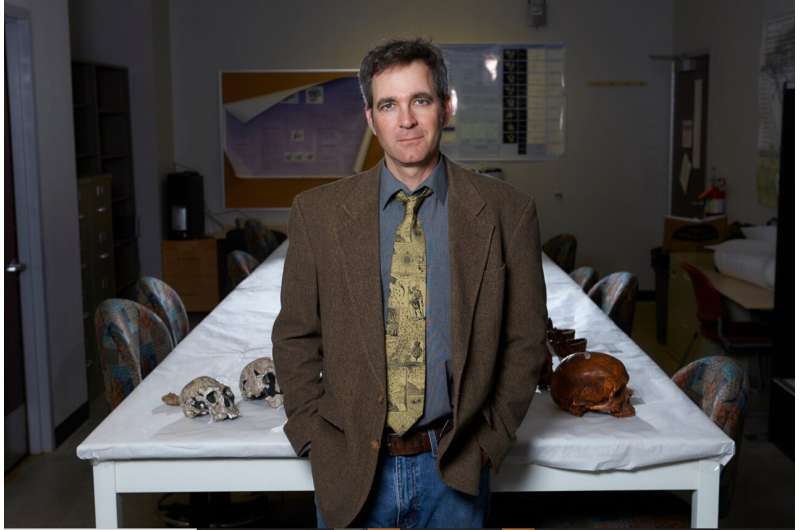UNLV anthropologist Brian Villmoare. Credit: Aaron Mayes/UNLV
Did the 12th century BCE – a time when humans forged great empires and developed new forms of written text – coincide with an evolutionary reduction in brain size? Think again, says a UNLV-led team of researchers disproving a hypothesis that is gaining popularity among the scientific community.
Last year, a group of scientists made headlines when they… concluded that the human brain shrank during the transition to modern urban societies about 3,000 years ago, because, they said, our ancestors’ ability to store information externally in social groups diminished our need to preserve large brains. Their hypothesis, which explored decades-old ideas about the evolutionary reduction of modern human brain size, was based on a comparison with evolutionary patterns seen in ant colonies.
Not so fast, said UNLV anthropologist Brian Villmoare and scientist Mark Grabowski of Liverpool John Moores University.
In a new article published last week in Frontiers in Ecology and Evolutionthe UNLV-led team analyzed the dataset the research group used from last year’s study and rejected their findings.
“We were struck by the implications of a substantial reduction in modern human brain size from about 3,000 years ago, during an era of many significant innovations and historical events – the emergence of the New Kingdom of Egypt, the development of the Chinese writing system, the Trojan War, and the rise of the Olmec civilization, among many others,” Villmoare said.
“We reexamined the data set from DeSilva et al. and found that the size of the human brain has not changed in 30,000 years, and probably not in 300,000 years,” Villmoare said. “In fact, based on this dataset, we cannot establish a reduction in brain size in modern humans for any period of time since the origin of our species.”
Key learning points
The UNLV research team questioned several of the hypotheses DeSilva et. already derived from a dataset of nearly 1,000 early human fossils and museum specimens, including:
The UNLV team says the emergence of agriculture and complex societies occurred at different times around the world — meaning there must be variation in the timing of skull changes seen in different populations. However, DeSilva’s dataset only sampled 23 crania from the time frame critical to the brain shrinkage hypothesis and collected specimens from locations such as England, China, Mali and Algeria.
The data set is highly biased because more than half of the 987 skulls examined only represent the last 100 years of a 9.8-million-year span — and therefore don’t give scientists a good idea of how much skull size has changed over time.
Multiple hypotheses about causes of reduction in modern human brain size need to be reassessed if the human brain has not really changed in size since the arrival of our species.
When and why did the human brain shrink in size 3000 years ago? Ants can hold clues
Brian Villmoare et al. Did the transition to complex societies in the Holocene lead to a reduction in brain size? A reassessment of the DeSilva et al. (201) hypothesis, Frontiers in Ecology and Evolution (2022). DOI: 10.3389/fevo.2022.963568
Quote: No, the human brain didn’t shrunk 3,000 years ago: Study (2022, Aug 5) retrieved Aug 5, 2022 from https://phys.org/news/2022-08-human-brain-years.html
This document is copyrighted. Other than fair dealing for personal study or research, nothing may be reproduced without written permission. The content is provided for informational purposes only.

